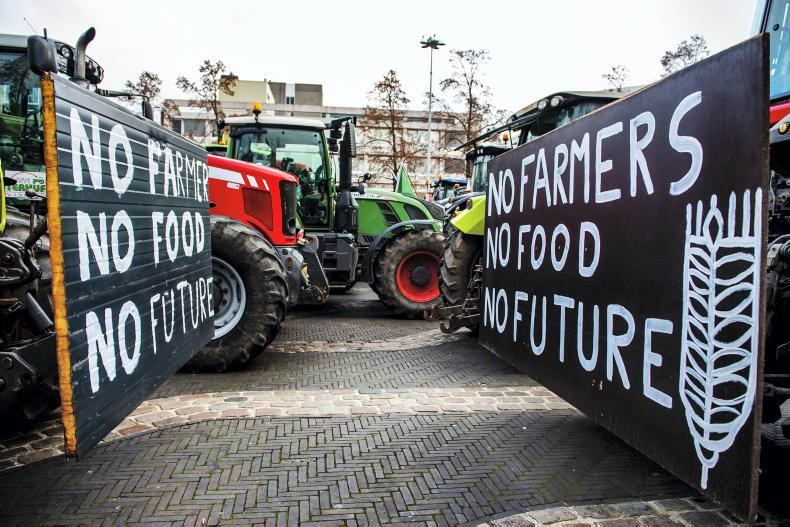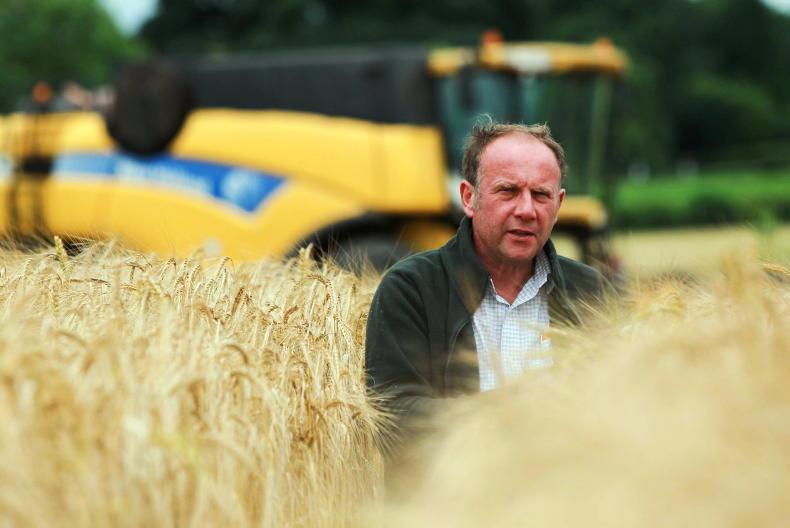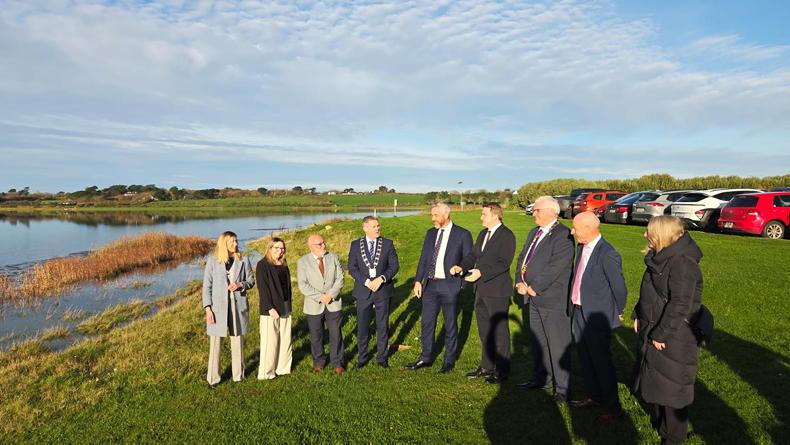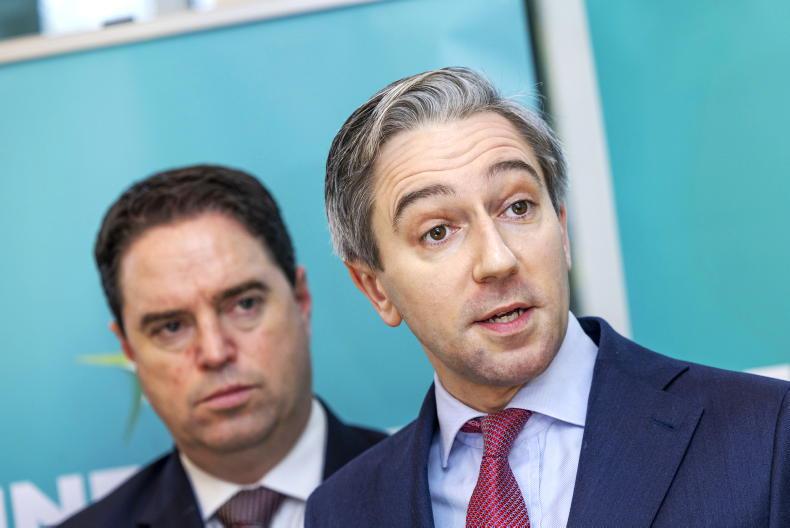There have been significant changes in recent years and more on the way concerning the application of chemical fertiliser at farm level. The National Fertiliser Database is established at this stage and provides evidence of what fertiliser has been purchased and applied.
Its introduction has cast a spotlight on adherence to rules introduced in recent years governing nitrogen and phosphorus limits and avoiding potential penalties. Further changes will be introduced in 2025, following proposed additional measures under the Fifth Nitrates Action Programme.
While the Department has outlined a date of 1 January 2025 for the introduction of reduced nitrogen limits for farms with a certain stocking rate, technically they do not come in to play until the Public Consultation on the additional measures has been completed and the Minister for Housing, Local Government and Heritage James Browne signs them in to legislation.
Nitrogen limits
There are three proposed additional nitrogen measures. For farmers with a grassland stocking rate of above 170kg organic nitrogen (N) per hectare (ha) a further 5% reduction in the maximum allowable chemical nitrogen fertiliser application will apply from 1 January 2025.
Table 3 continues to use the permitted nitrogen limits for 2024 as no figures has been outlined in the draft proposals. The figure in brackets denotes a straight reduction calculation of 5% from these figures for demonstration purposes.
A new chemical nitrogen stocking rate category is being introduced, also from 1 January 2025, for farms with a grassland stocking rate of less than 85kg N/ha with the maximum volume of chemical nitrogen set at 90kg/ha. It is assumed in this situation that the chemical nitrogen limit of 114kg/ha will then apply at a stocking rate of 91kg N/ha to 130kg N/ha.
It is not discussed in the proposals about whether the maximum nitrogen fertilisation rate for first-cut silage will be reduced in line with this change, with figures entered in Table 4 applicable for 2024. The final chemical nitrogen change for 2025 relates to the availability of granular urea. A restriction on the use of unprotected urea in granular form will apply from 15 September 2025. Provision for the use of unprotected urea in liquid nitrogen form will be retained due, according to the proposals, to its typically lower and more accurate application rates.
There has been a much greater spotlight over the last 12 months on phosphorus limits. Many drystock farmers go nowhere near utilising their nitrogen limits but phosphorus limits can be reached more easily with farmers quickly using their allowances, even where seemingly applying low volumes of P fertiliser.
The increased interest in P limits is stemming from a greater focus on ensuring compliance with nitrates rules following the introduction of the National Fertiliser Database. The relevant tables are listed in the box on right to give farmers an idea of the type of limits available to them under varying stocking rate and soil index. The stocking rate is based on the previous year’s data.
Phosphorus allowance
Eligible soil analysis results are central to establishing the volume of chemical phosphorus permitted. Where soil samples are not available then farms with a grassland stocking rate in excess of 130kg organic nitrogen (N)/ha in 2023 must assume index 4 for P.
This means such farms will have no allowance to purchase fertiliser containing P. Farms with a grassland stocking rate of less than 130kg organic N/ha must assume index 3 for P in the absence of soil samples.
Where soil analysis is available then the tables show the permitted levels for farmers with livestock (Table 1) and systems with no livestock (Table 5) producing grass-based forage crops for sale. Phosphorus imported on to the farm via concentrates, or imported organic manures must be deducted from the farm’s allowance.
For concentrates the farm’s total available phosphorous allowance should be reduced by 5kg per tonne of concentrate feed purchased (unless P analysis states otherwise) in the previous year above 300kg of concentrates per 92kg organic nitrogen produced that year.
P build-up
There is a measure termed the P build-up allowance that allows grassland farmers stocked at greater than 130kg organic N/ha to apply additional phosphorus fertiliser to improve soil fertility. The measure is aimed at improving nitrogen use efficiency along with providing a more favourable environment for actions such as incorporating clover. As demonstrated in Table 2, the measure permits a higher P allowance on Index 1 and 2 soils.
Farmers wishing to avail of such a measure must submit a nutrient management plan prepared by a Farm Advisory Service (FAS) adviser. Soil analysis is a requirement as is determining the soil organic matter content. The latter ensures excessive levels of P are not applied to organic soils such as peat soils.
Footnotes for Tables 1, 2, 3 and 5
1. Total annual nitrogen (kg) excreted by grazing livestock averaged over the eligible grassland area (grazing and silage area). Stocking rate refers to grassland area only.
2. The fertilisation rates for soils which have more than 20% organic matter shall not exceed the amounts permitted for Index 3 soils, subject to the provisions in Article 16(3)(f).
3. Manure produced by grazing livestock on a holding may be applied to index 4 soils on that holding in a situation where there is a surplus of such manure remaining after the phosphorus fertilisation needs of all crops on soils at phosphorus indices 1, 2 or 3 on the holding have been met by the use only of such manure produced on the holding.
4. The maximum phosphorus/nitrogen fertilisation of grassland shall not exceed that specified for stocking rates less than or equal to 170kg/ha/year unless a minimum of 5% of the eligible area of the holding is used to grow crops other than grass or a derogation applies in respect of the holding. For Table 3, for a new derogation applicant they may apply the derogation rate of 225kg/ha for the first year only and from year two onwards must use rates as per stocking rate on the holding.
5. This table does not imply any departure from Article 20(1) which prohibits the application to land on a holding of livestock manure in amounts which exceed 170kg nitrogen per hectare per year, including that deposited by the animals themselves (or 250kg in the case of a holding to which a derogation has been granted in accordance with the Nitrates Directive).
6. An additional 15kg of phosphorus per hectare may be applied on soils at phosphorus indices 1, 2, or 3 for each hectare of pasture establishment undertaken.
Footnotes for Table 5 only
7. The fertilisation rates apply to grassland where there is no grazing livestock on the holding and also to those areas of farms where hay or silage is produced for sale off the holding on farms stocked <85kg grassland stocking rate.










SHARING OPTIONS